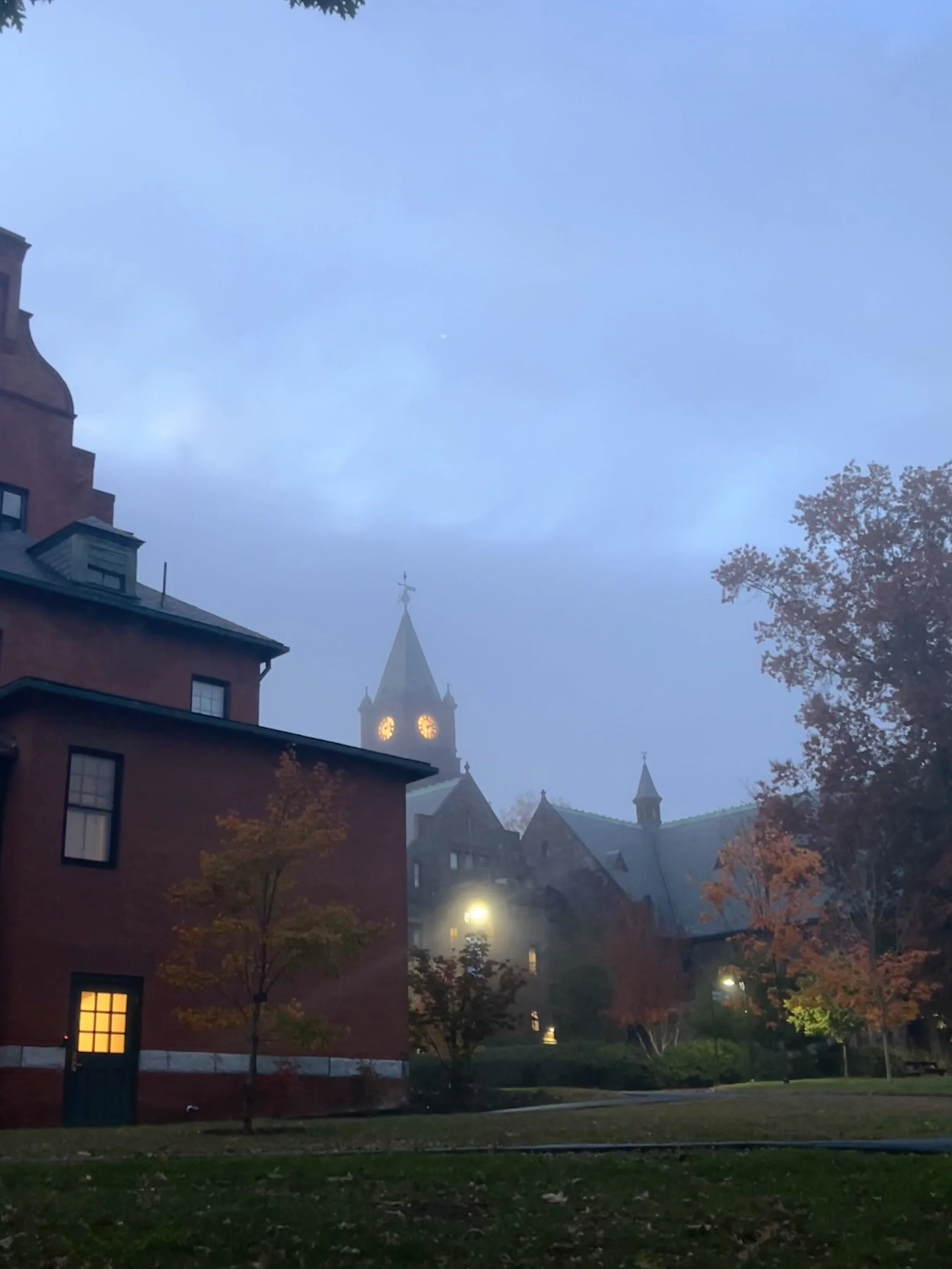With many news stations relying on viewer engagement to support their newspapers, online journalism has seen an overwhelming prevalence of clickbait and paywalls, so much so that it has become the new norm for online newspapers. As journalistic standards are an expense, what happens to those who can’t afford it?
Fizzing too close to the sun: The thrill of arguing incognito
Taking away dislikes is not enough to stop social media harassment
In concept, removing “dislikes” from social media platforms seems like a good idea and a practical way to reduce harassment and negativity, but it might not be in practice. In reality, this is more superficial than it seems because rampant harassment persists. While there may be no public like-to-dislike metric anymore — having since been removed on platforms like Facebook and YouTube — this change is not enough. Many times, it seems that the most that any platform does is advise members to be respectful of community guidelines, with a possibility of flagging spam comments. Due to the popularity of sharing material, moderation of sensitive material or anything that violates community guidelines is often difficult.
What a broken bridge has taught us about anti-Blackness
Mount Holyoke College: the land of laptops left behind
Bookworms, keep calm: Dystopian YA has returned
Maybe you spent countless hours scouring YouTube for the most recent compilation video of Jennifer Lawrence and Josh Hutcherson, either in press interviews or sorrowful “Hunger Games” edits set against the song “Just A Game” by Birdy. Or, if you felt a need to categorize yourself with a fictional group as the basis of your prepubescent personality, perhaps you took the same “Divergent” faction quiz multiple times until “Dauntless” shined through your laptop screen, hidden under the covers on a school night.
“Before and after” weight loss content is problematic
Saying that TikTok promotes an unhealthy standard for young women and their body image is about as uncontroversial a take as you can get. Between videos touting buccal fat removal surgery and recommending Botox™ injections for teenagers, the platform is rife with content that could leave even the most conventionally attractive person in shambles after just a cursory scroll of their For You page. However, a special kind of damage is dealt by a prolific genre of “glow-up” videos: ones that show people, nearly always women, in a “before” and “after” side-by-side of their weight loss journeys.
The Hollywood labor strikes are over, but what has changed?
The Screen Actors Guild-American Federation of Television and Radio Artists strike recently came to an end after 118 days, with actors celebrating the prospect of returning to work. The union came to a historic deal with the Alliance of Motion Picture and Television Producers, with the largest increase in minimum wage in 40 years, according to The Washington Post. However, because the deal is so new, it remains to be seen if it will be honored and if actual change will occur in the industry.
The College must fix its parking problem
Why we need to read archaic literature: the value of studying original texts
Opening a play — or any literary work — that was written hundreds of years ago can be a tremendously daunting task. The English language is incredibly dynamic and has evolved so much over the centuries that old texts might seem indecipherable through a modern lens. However, by reading these texts in their original forms, we can better appreciate the artistry of their creators and gain insight into the past.
Mount Holyoke fails its principle of intellectual diversity
The lighting at Mount Holyoke is due for an update
Sitting in my dorm room in 1837 Hall, I’m always struck by the lovely view of Lower Lake, especially at night when it is brightly illuminated by the lights of Blanchard Hall — lights that seem to remain on 24/7. Mount Holyoke College feels like a community within itself. There’s little one would need outside of the campus grounds, and it’s a pastoral picture of campus living — during the day that is. At night, the campus is lit up like a star by street lights and uninhabited buildings whose lights appear to remain on all night long.
Tollywood film RRR’s global recognition invites critique
Signage at the Golden Globe Awards. Image courtesy of the Wikimedia Commons, Peter Dutton.
By Jahnavi Pradeep ’23 & Kaveri Pillai ’23
Opinion Editors
In Tollywood’s fictionalized period film “RRR,” hero Alluri Sitarama Raju turns to a British colonizer during a party to ask, “Not salsa, not flamenco, my brother … do you know Naatu?” When the man bewilderedly fumbles, “What is Naatu?” Raju and fellow hero Komaran Bheem break into song and dance, educating their surrounding British crowd on Naatu, or Indian dance, through their coordinated grooves matched to the energetic beat of their Telugu lyrics.
The dance number, aptly titled “Naatu Naatu,” has proceeded to garner global recognition, winning a 2023 Global Globe Award in the best original song category and beating the competing songs, Rihanna’s “Lift Me Up,” Lady Gaga and BloodPop’s “Hold My Hand,” Roeben Katz and Guillermo del Toro’s “Ciao Papa” and Taylor Swift’s “Carolina.”
The Golden Globes were televised on Jan. 10, 2023, to audiences across the world to celebrate the excellence of television and films produced in 2022. After its problematic history of lacking diversity and inclusion, the Hollywood Foreign Press Association’s acknowledgment of the problem was evident at the ceremony.
This year’s Golden Globes saw monumental wins for people of color, with movies like “Everything Everywhere All At Once” and television shows such as “Abbott Elementary” carving spaces for non-white-centric content and recognition in media. The HFPA also strived to go beyond the United States’ contribution to film and television with countries worldwide receiving a nod of approval from the academy.
“Naatu Naatu” and its movie, “RRR,” have found a spot in this marketplace. The song’s Golden Globe Award is accompanied by a list of accompanying accolades for “RRR.” Among others, the film was also nominated in the Golden Globes’ best non-English language film category and for Critic’s Choice Awards in the categories of best picture, best director, best visual effects, best foreign language film and best song, winning in the last two of these categories. “Naatu Naatu” has also been nominated in the best achievement in music written for motion pictures (original song) category for the upcoming 2023 Academy Awards, making it the first Indian feature film to be nominated in a category other than best international film. Furthermore, “RRR” was touted by the Hollywood Reporter to be one of the highest-grossing Telugu-language films and one of the most streamed Indian films ever on Netflix.
At first glance, “Naatu Naatu” and “RRR’s” global recognition is a welcome celebration that acknowledges the scope of Indian cinema beyond the seemingly more familiar Bollywood industry. Having South Indian roots ourselves, we have noticed how South Indian culture is often perceived as embarrassing and uncivilized. South Indian films are similarly ridiculed for their cringe-worthy content, even within South Asia. Herein, the win for “Naatu Naatu” felt like a triumph for India’s diversity of language and culture.
Yet, our joy over representation is accompanied by critique. “Naatu Naatu’s” win and “RRR’s” popularity on an international platform, while exciting on the surface, raises concern as to what qualifies an Indian film for global recognition.
The song and film fault in prioritizing whiteness over creating a space for authentic Indian representation. Its reception then emboldens the obvious performative move by the West — here the HFPA — to represent for representation’s sake, a model that caters to the familiarities of Western audiences over choosing the best of Indian cinema and representation of its people.
“RRR,” short for Rise, Roar, Revolt, is a 2022 Tollywood, or Telugu-language, film directed by S.S. Rajamouli set in 1920s colonial India. The action-packed epic follows a fictionalized account of two real freedom fighters, Alluri Sitarama Raju and Komaram Bheem, the dance experts from “Naatu Naatu,” as they join hands to revolt against the colonial British rule of the time.
Riddled with Hindu nationalist and mythological themes, the film explores a narrative chronicling brotherhood and unity amongst Indians during colonial rule. “Naatu Naatu” echoes the crux of the film’s themes of standing up to colonial oppression. When Raju and Bheem attend a party primarily populated by the British, one of the men, motivated by jealousy over Bheem’s courtship of one of the white women, ridicules Bheem for his brownness.
He mockingly asks his fellow colonizers, “What do [Indians] know about art? About finesse? About dance?” He then shows off his own moves in tango, swing, flamenco and salsa, pointing out the brown man’s lack of access to this culture. However, Raju and Bheem are undeterred and join forces to show how “naatu,” the Indian dance, is not inferior. The two men are able to stand up for their culture and push back against the colonizers’ mistreatment of Indian culture. Their dances soon infect the whole crowd of Britishers, who begin dancing along with them. Raju and Bheem are successful in correcting a bias in the colonizer on Indian “finesse” as well as culture, art and dance.
The song seems to champion Indian culture and challenge its ridicule by the colonizer; there in itself is the problem. “Naatu Naatu” is still a song obsessed with the Western audience and fixing their misconceptions of what it means to be Indian. The British men are prevented by their female counterparts from stopping Raju and Bheem’s dance, and the enthusiastic women take part in the revelry.
Herein, a power dynamic is immediately established, wherein white approval forms an integral part of the two men’s celebration of their culture. While chronicling the anguish of colonial India, the film’s ability to exist globally then also establishes how there needs to be white presence on screen for it to become globally relevant. However, it is not the duty of the Indian film to coddle Western audiences, especially their former colonizer, and spoon-feed them respect and decency toward their culture.
In an article for Times of India, Bharti Dubey and Almas Mirza discuss “Naatu Naatu’s” global success, owing it to how the song was “specifically written to build the emotions and propel the story and the narrative of the film forward.” Contextualizing “Naatu Naatu” in the film strengthens how this internationally acclaimed piece of art merely scratches the surface of the topics it attempts to cover and really does forget about doing right by its characters.
“RRR” is a film that showcases Indians in reductive portrayals to favor the cinematic experience. For example, Komaram Bheem, one of its two central characters, is a Gond Adivasi. He is first introduced in a jungle setting, pouring blood over himself and fighting a tiger somewhere in the Adilabad district of Hyderabad. The Gond tribals are immediately associated with animalistic tendencies, reinforcing long-standing stereotypes about tribal populations.
What makes this even more harmful is that Bheem is a fictionalized version of an actual historical figure with living family. While the film does establish itself as a fictionalized account, Mohan Guruswamy aptly points out in an article for LiveWire how this is still dangerous: “When you appropriate the lives and personalities of two genuine heroes for a tawdry commercial excess, it doesn’t absolve the makers of distortion.”
“RRR” succeeds in caricaturing the real-life accounts of its two revolutionaries and the communities to which they belong. What becomes a priority is using the heroism of the South Indian cinematic experience to simultaneously correct and placate the West. Any real simmering colonial discontent, as demonstrated in the song alone, is shoved under the carpet, as we see the two main characters surrounded by the English upper class as they entertain them with their skillful dance steps and catchy music.
Award ceremonies must do better than capitalize on films like “RRR.” What makes “Naatu Naatu’s” Golden Globe win seem even more performative is the recent commercial success and market growth of the Tollywood industry. It then appears as if the song’s win is a dual attempt by the award ceremony to absolve their historic whiteness crisis as well as tap into a new profitable market.
“RRR” and “Naatu Naatu” are not the best that India has to offer. Their nominations echo a superficial celebration of a film that reifies regressive tropes and calls for more critical choices on what films we choose to celebrate.
Dining Commons table signs garner mixed reactions from students
I have gone entire days where I have eaten alone in the Dining Commons for every meal. It can be monotonous to not have anyone to converse with. Yet, I never go up to the many tables filled by my peers and ask to sit with them. In November 2022, the The Division of Student Life implemented a new dining feature attempting to change all that: signs you can put on your table inviting strangers to come and sit.
‘Indian Matchmaking’ perpetrates harmful gender stereotypes
Courtesy of Patina Photography.
The second season of “Indian Matchmaking” demonstrates that reality television often depicts situations and people in false, harmful ways that do not align with the experiences of people on the show.
By Jahnavi Pradeep ’23
Opinion Editor
On August 10, 2022, Netflix reality show “Indian Matchmaking” returned for a second season, drawing audiences back into its trap of arranged marriage matchmaking fiascos. The first episode of the season — titled “I’ve Dated Lots of Chicks” — opens to host and professional matchmaker Sima Taparia happily attending the marriage of two of her clients. Against the backdrop of her successful project, Taparia expressed her joy in being a matchmaker, “First is marriage, then love. That is the beauty of these arranged marriages.” The season subsequently picks up for eight episodes of Taparia’s matchmaking trial and errors.
“Indian Matchmaking” brings a strong potential to the screen in explaining what Indian marriages look like. In an article for The Juggernaut, Ishani Nath explores how “Indian Matchmaking” is more than just a “dating show” as it is “introducing and shaping how a global audience understands the matchmaking industry.” In fashioning itself as a reality show intimately following the lives of an Indian host and her Indian clients, it offers what viewers may assume is an authentic representation of the Indian experience in the arranged marriage landscape.
Unfortunately, both seasons disappoint. The second season shows no growth from the first and continues following the same apparently stubborn, upper middle-class clientele. Moreover, while carefully avoiding the controversial blunders of colorism from its first season, season two of “Indian Matchmaking” still resorts to dangerous stereotypes — one of the largest being sexism. As Nath aptly captures, the show begins to read as more of an “arranged marriage PR rather than a series based on reality.” The public relations scheme of the show bolsters single-sided narratives that subtly construct regressive ideas on arranged marriages wherein the Indian woman invariably gets left on the outside when not conforming to expected gender roles.
The show’s double standard is apparent in the season’s differential treatment of returning female and male clients from season one — Aparna Shewakramani, Nadia Jagessar, Shekar Jayaraman and Pradhyuman Maloo.
“The public relations scheme of the show bolsters single-sided narratives that subtly construct regressive ideas on arranged marriages wherein the Indian woman invariably gets left on the outside when not conforming to expected gender roles.”
Aparna Shewakramani, a Houston-based lawyer in her mid thirties and a client of Taparia’s, garnered significant negative attention in her first season. Taparia sets her up as a character with impossible dating criteria and an intolerable personality, resulting in failed talking stages that never move any further.
After the first season, Shewakramani received immense online hate and death threats. As a response to her inaccurate portrayal on the series and its consequential cyberbullying, she wrote a book titled “She’s Unlikeable: And Other Lies that Bring Women Down.” Shewakramani discusses not just her challenging experience with Taparia but the role of “Indian Matchmaking” in presenting her in a one-dimensional light. In an interview with The Indian Express, she reminded audiences that reality shows are still fictionalized versions of reality: “It is my hope that people move forward in consuming media more responsibly. We should, of course, enjoy it for entertainment purposes but we should by no means take it as absolute truth.”
“Indian Matchmaking” negatively portrays confident, self-sufficient women as “unlikeable,” thereby concentrating only on these aspects of Shewakramani’s character. Season two shows how this problem is not only encouraged by Sima Taparia and her often outdated modes of thought, but also by the creators of the show. In season two, Shewakramani is no longer Taparia’s client but works as her own matchmaker. However, the construction of Shewakramani, while including more of her personal successes and journey as an individual, does not completely abandon its assertion of her unlikeability. Episode one of season two — “I’ve Dated Lots of Chicks” — opens to a changed Shewakramani. She reiterates the life formula she had created for herself, the essence of her season one quest — getting married, having children, maintaining her professional life and moving into a “McMansion.” She then asserts, “I’m done with the life I thought I wanted.”
Situated in her New York City apartment, Shewakramani seems positioned for better things in her life and for the show. However, “Indian Matchmaking” does not follow through on portraying this stability. Instead, from this moment on, season two fails to sufficiently chart Shewakramani’s relationships, with similar unsuccessful dates to season one and a sudden disappearance midseason. As contributor Meha Razdan wrote for Buzzfeed News, “There’s nothing fundamentally wrong with Aparna’s storyline, per se, but without the tether of Sima, the viewer is left scratching their head wondering what this has to do with the matchmaking aspect.”
“While sexism is a common reality in matchmaking, the show’s orientation does not tackle the dangers of this discrimination, but rather reinforces that any woman thinking outside of convention is set to lose when it comes to love, and is deserving of blame.”
It seems that Shewakramani is brought on the show merely to tap into the fame surrounding her book release. This becomes increasingly believable as none of Shewakramani’s fellow female stars on Indian Matchmaking are seen in a progressive light and are still portrayed as unlikeable when they break certain gender norms.
Nadia Jagessar is one such person. Throughout season two, Jagessar is made out to be unlikeable for supposedly breaking the heart of Shekar Jayaraman — another season one client — in pursuit of a younger man named Vishal Kalyanasundaram.
At the end of season one, there seems to be a possibility, though not fully defined, of a romance between Jagesar and Jayaraman, one of Taparia’s other clients. When we return for season two, both Jagessar and Jayaraman are seemingly single and have the will-they or will-they-not date question lingering over their interactions. Jayaraman visitsJagessar’s house in episode one, cordially and warmly interacting with her whole family. He is immediately set up as a likable young suitor for Jagessar. However, the situation between the two is still in a gray area, with uncertainties looming from both sides. When Jagessar hosts a party for Taparia’s clients later in the same episode, she hits it off with the twenty-something Kalyanasundaram. Jagessar is immediately villainized for her behavior toward Jayaraman and belittled for her romance with a younger man.
In an article for Indian Express, Nadia Jagessar explains how she never dated Jayaraman in the two and a half years she knew him and was hurt by how the show edited her story arc in the second season. The article discusses how Jagessar “noted that it is ‘unfortunate’ that the show edited it to look like she had broken Shekar's heart.” In looking for her own love interest and pursuing someone conventionally inappropriate, Jagessar is made unlikeable. She quickly disappears from the show after her fling with Kalyanasundaram comes to an end. The show erases Jagessar’s reality to replace it with a fictionalized account that reinforces the show’s idea that progressive women cannot function in the arranged marriage arena. Taparia’s failure as a matchmaker slowly nods in this direction as well, blaming women for the shortcomings of matchmaking in the modern age, rather than lauding them for breaking past convention, if anything. Jagessar and Shewakramani are molded into selfish creatures demanding the hate of audiences.
The returning men of the show are inversely coddled. Jayaraman is depicted as the heartbroken man begging audiences for their sympathy. He still very much receives the show’s favor. Similarly, returning client Pradhyuman Maloo is glorified as a success story in the season. Like Shewakramani, he no longer is a client of Taparia’s and has found a wife on his own, at a party. Maloo was as stubborn — if not more — than his female counterparts during the first season. And yet, we are asked to forget all about it in the second season. He is instead given the Indian wedding everyone has been waiting for and does not disappear midseason without a grand send-off. He is even invited back to the show’s coveted married couple confessional couch with his wife for tips on his success story.
Reality shows, while based on the lives of real people, cannot be conflated with reality. The genre still alters and even fictionalizes narratives to suit the requirements of their shows. “Indian Matchmaking” is a clear example of this, altering the lives of its participants to suit certain narrative tropes that insist on an stereotypical arranged marriage system that cannot accept self-sufficient women. While sexism is a common reality in matchmaking, the show’s orientation does not tackle the dangers of this discrimination, but rather reinforces that any woman thinking outside of convention is set to lose when it comes to love, and is deserving of blame.
India’s COVID-19 surge caused by government negligence and lax controls
Biden’s policy shift in Yemen is not enough to promote peace
For over six years, Yemen has been torn apart by war. The United States has been supporting a Saudi-led coalition’s military campaign against Houthi rebels from the mountainous northern provinces of Yemen. When Saudi Arabia and its allies launched Operation Decisive Storm in 2015, they were expecting an outright victory within weeks. This assessment was too optimistic.
Western film reduces India to a caricature, pandering to Western audiences
The movie “Eat Pray Love” directed by Ryan Murphy situates the viewer in India through quick shots of crowded streets. Bikes and rickshaws furiously honk at each other over the evening traffic. Children run across streets with sheer abandon, and vendors prepare food for the gathering crowds. M.I.A.’s “Boyz” plays in the back as Julia Roberts enters the scene in a cab, eyes reeling at the reckless driving and noise around her. As the cab slows down, she offers her hand to the bunch of children gathered by her window, guarded. A sense of exasperation permeates both her and the audience at the sight of this chaotic surrounding. India, as seen here, is an impenetrable and uncivilized mess.
Early childhood nutrition education is just diet culture in disguise
American children are bombarded with messages from every angle telling them that there is an ideal way to eat and that being thin is both healthy and desirable. The education that children receive about nutrition from parents, schools and the media involves policing food choices, regulating exercise and monitoring weight, often via the inaccurate and misleading body mass index measurement. These practices place moral judgments on what children eat and what their bodies look like. While efforts from adults to teach the youth about nutrition are well-intentioned, they often end up laying the foundation for children to develop unhealthy relationships with food and their bodies.
Romanticizing killers is dangerous and can motivate further acts of violence
I grew up in a very small Vermont town; at the time my high school had less than 700 students. I was a junior in February 2018, when Nikolas Cruz killed 17 people at Marjory Stoneman Douglas High School in Parkland, Florida. Even in Vermont, I was scared to go to school some days, and that fear didn’t dissipate until I graduated over a year later.

















